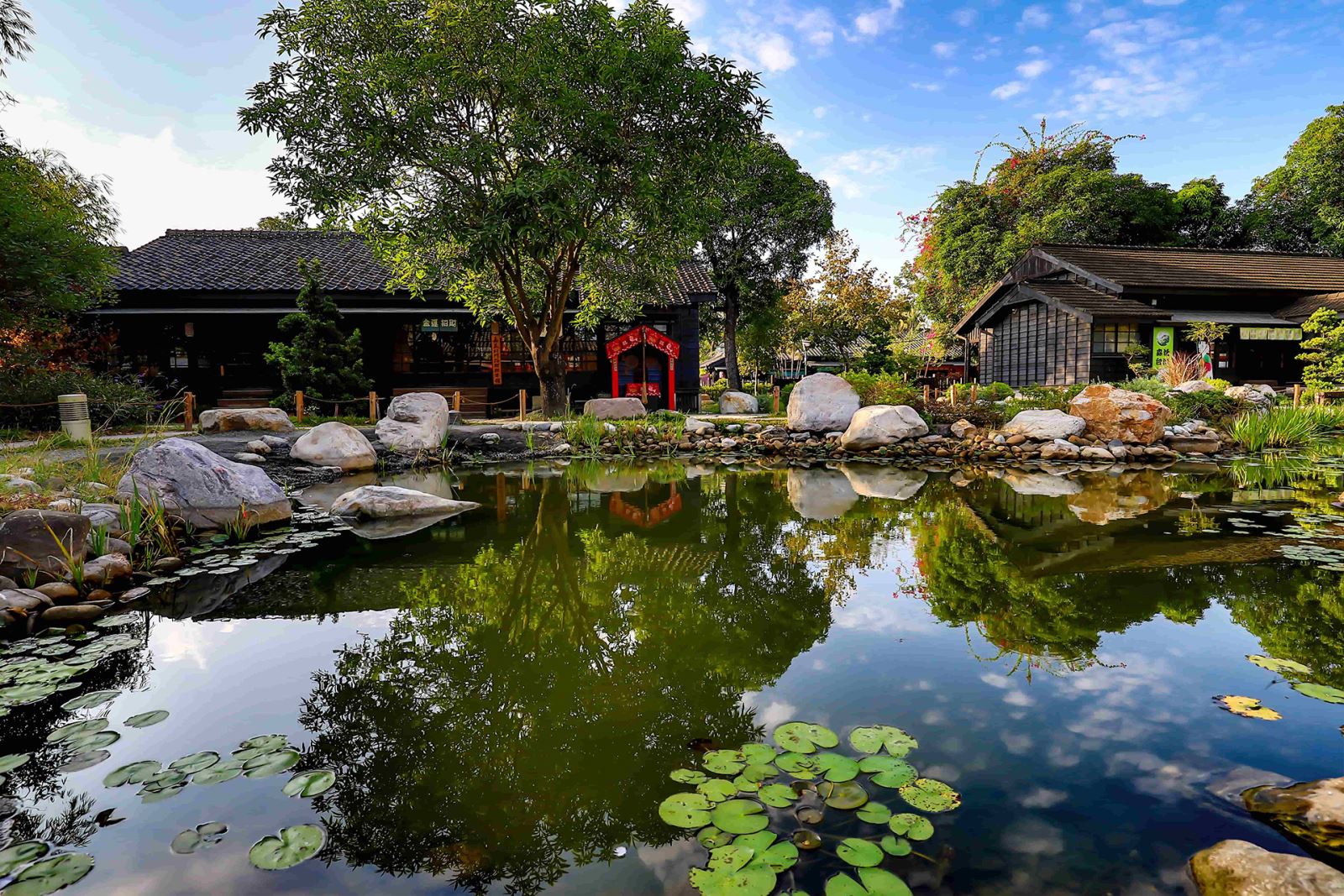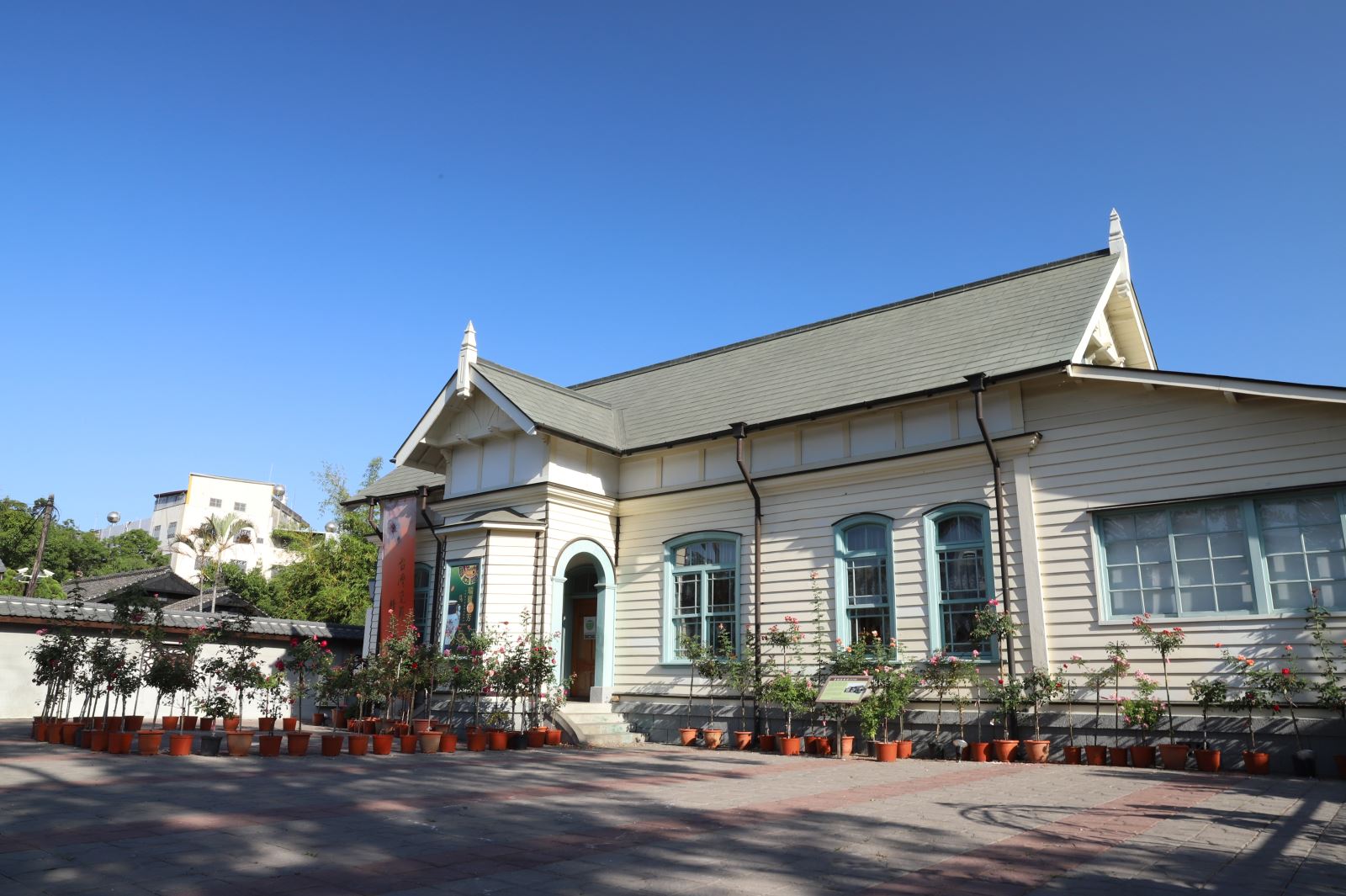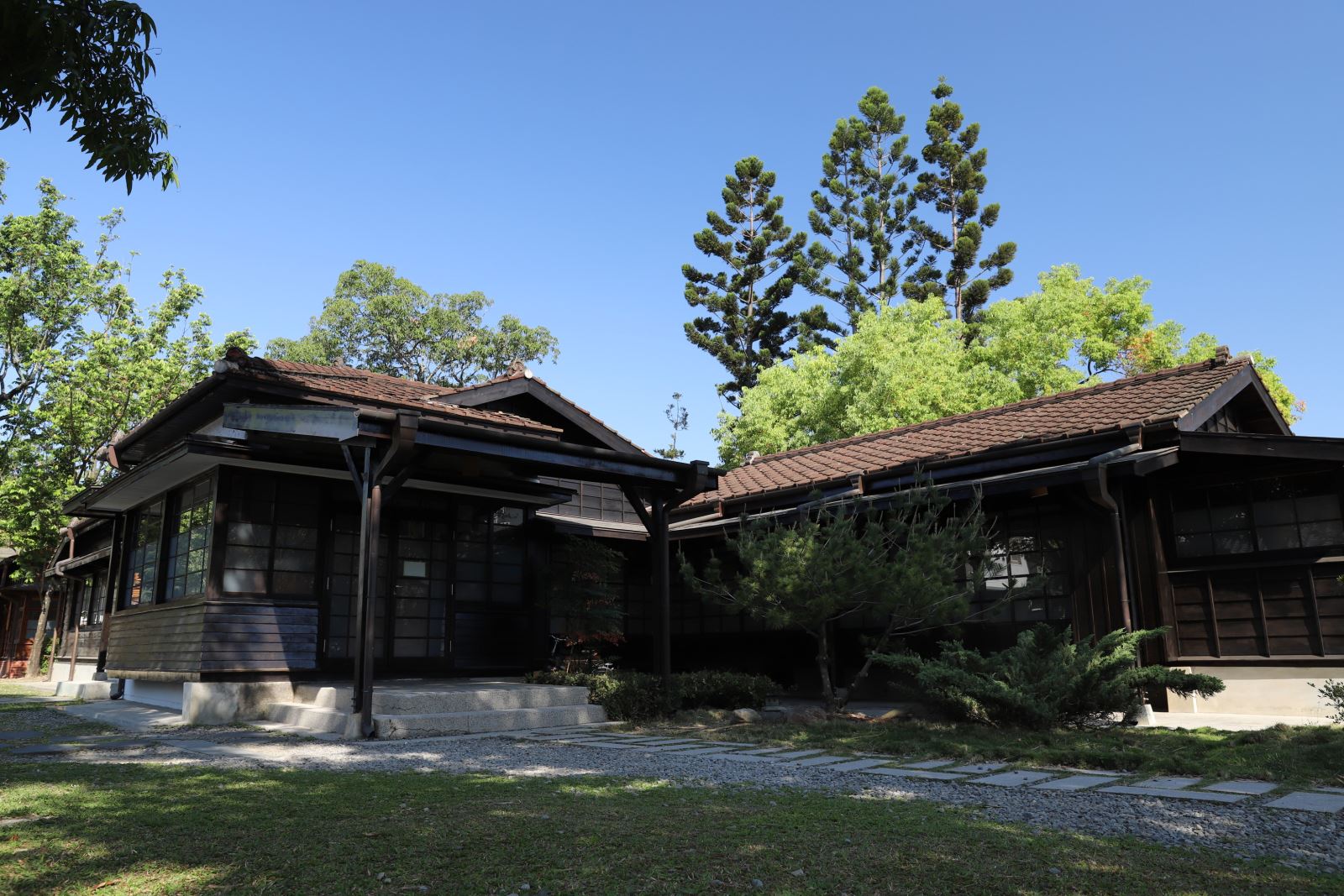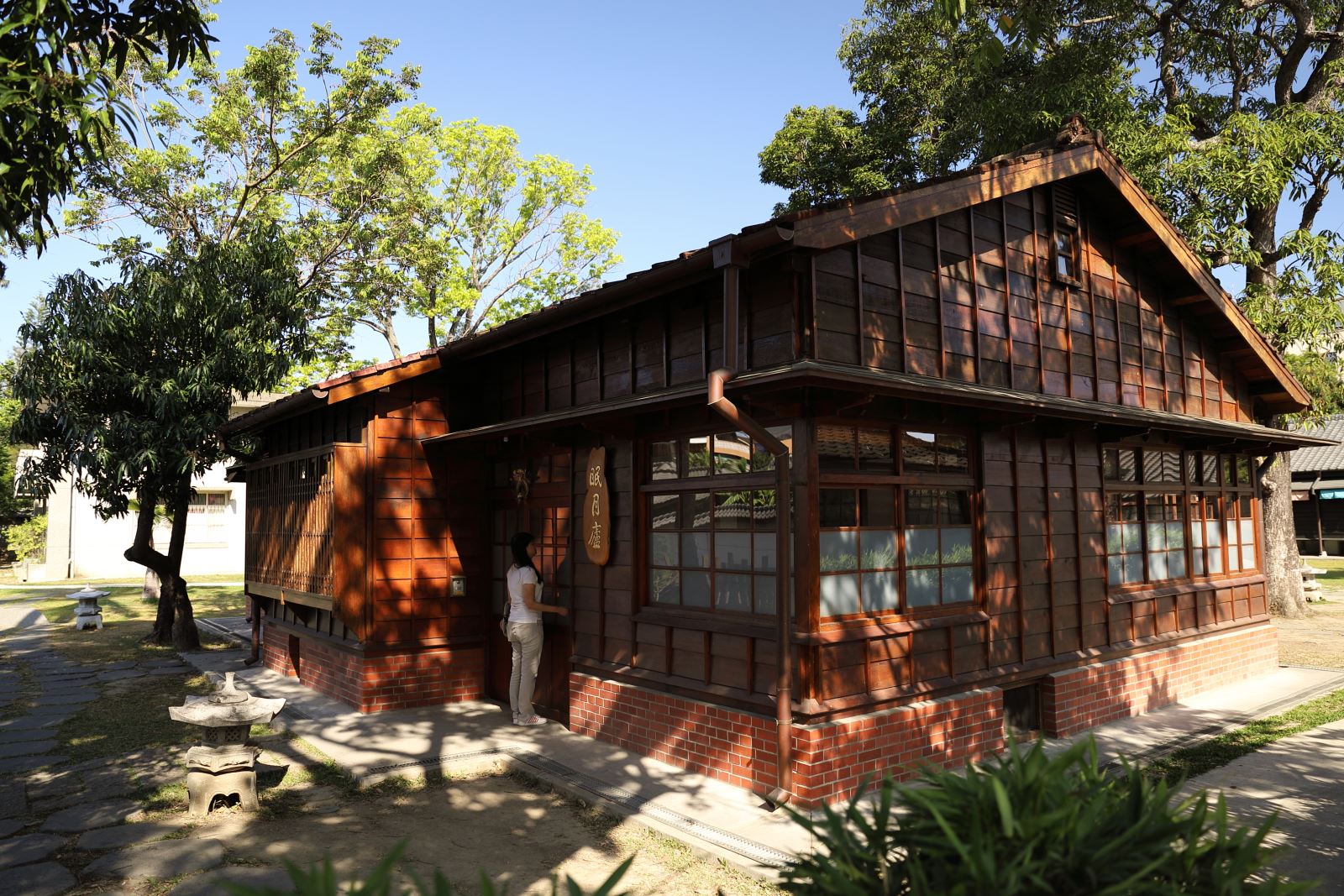Tree-ring Plaza
This three red-cypress-shape sculpture, which symbolizes the Sacred Tree of Alishan, is the entrance landmark of Hinoki Village. The Tree ring, symbolizing the life cycle, means the prosperity and endlessness of forestry.

Pool Landscape
- The building structures of the "Hinoki Village" are divided into "one-home house", "two-home house," and "four-home row house" according to their structure patterns.
- The historical building restoration plan for Hinoki Village aims to re-examine the space functions and outdoor space, retain the old trees with a diameter of 20 centimeters or more and improve the landscape, with water pool having fire prevention function.

T19 Forest Club
- Forest Club, built by the forest authority during the Japanese colonial period aimed to accmodate forestry labors.
- It adopted western architecture style under Meiji Restoration, the westernization movement in Japan. Nowadays, this Forest Club is the best-preserved one among others, and it also becomes a tangible cultural heritage site in Taiwan.
Different usage after Taiwan Restoration:
1945-Zhongxiao Elementary School and later becomes an auditorium and the place for selling cedar temporarily
1984-lent to Chiayi County Investigation Station as its temporary office
1987-return to Forestry and Nature Conservation Agency as a dormitory
Now-become a public exhibition hall

T24 Official Residence of Director
- The OT contractor must provide three public exhibition halls for temporary exhibitions. This building is one of them.
- In 1910, the Alishan Operation Office, which was directly under the Office of the Taiwan Governor-General, was established. Under the Alishan Operation Office, the Chiayi Branch Office was set up. It was renamed as the Chiayi Branch Office, Forestry and Nature Conservation Agency, Office of the Taiwan Governor-General in 1916 and as Chiayi Branch Office, Forestry Office, Industry Promotion Bureau, Office of the Taiwan Governor-General in 1920. This house was the residence of the director of Chiayi Branch Office.
- structure pattern is the best among others and the area it covers is the largest in the Hinoki Village. The entrances and exits include the main vestibule, the minor vestibule and the kitchen door. The main vestibule is equipped with an exquisite cabinet (shoe cabinet) and bellow-style ceiling. In the 13.2 sq-meter living room, there is a 3.3 sq-meter alcove and the 13.2 sq-meter room separated by a paper door, providing flexible space for meeting or feast.
- The roof tiles are red cement style, different from the black roof tiles that are common in Japanese-style residences. The colored cement tiles were made by the Japanese who imitated the German-style buildings in Qingdao during World War I. At that time, they were high-end fashionable building materials.

T23 Mianyue Chamber
- It is the "one-home house" structure pattern. Judging from the literature, the house should be assigned only to the officer who is second to the director.
- Because of the serious damage, originally it was not listed as a historical building. Based on the principle of complete preservation of the forestry culture, the Chiayi City Government has striven for appropriation to renovate it using the "original materials and original construction methods" and actively listed it as a historic building.
- During the reconstruction, because the tiles were seriously damaged, the number of original roof tiles was not enough, and the manufacturers did not have intention to make molds for production because of the low market demand. Nonetheless, we looked for the similar tiles in the vicinity of Chiayi City and got enough number of tiles in the way of "replacing old tiles by new tiles".
- The Mianyue (sleeping moon) area in Alishan was once the place where the lush cedar trees gathered. Kawai Shitarō wrote a poem to sigh for the exploited forest, so the building was named "Mianyue cottage".
- It is a multi-purposed reading room for keeping thousands of precious books and multimedia materials about forestry. The room in the cottage can be used by artists-in-residence as a studio or by experts as a classroom for giving lectures or telling stories related to Alishan forestry, culture, ecology and forest railway, or teaching handcraft.

T25 Forestry Historical Museum
- The OT contractor must provide three public exhibition halls for temporary exhibitions. This building is one of them.
- Because the Munahuda still remained, it is certain that the building was constructed in 1944. At that time, Taiwan's forestry production, including Alishan, has been transferred to the Taiwan Development Co., LTD., so the building was not only a "company-owned house" but also an "official residence", which is a feature rarely can be seen.
